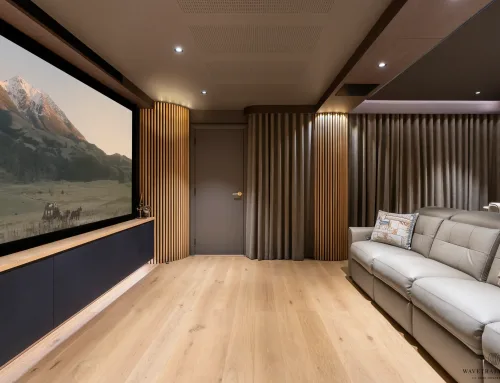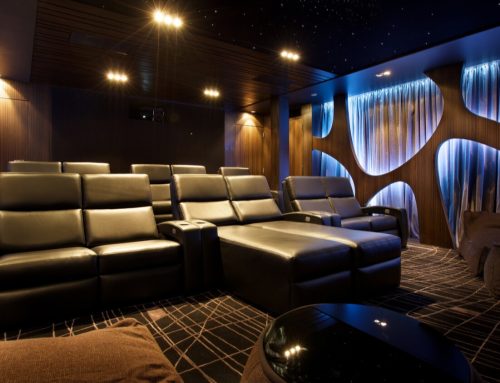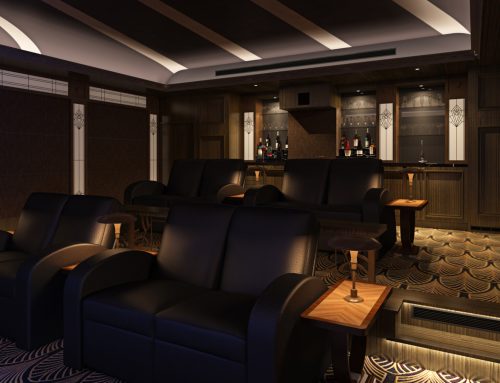When people think of a luxury home cinema, the first image that comes to mind is often the big screen. But behind that screen lies the true heart of the cinema: the home theatre projector. Your choice of projector determines how sharp, vibrant, and realistic your films look. A premium reference-grade projector doesn’t just display movies, it reproduces them exactly as the director intended.
Your choice of projector sets the standard for the entire experience. Even the best acoustics and seating layout can’t make up for a projector that falls short. At Wavetrain Cinemas, we’ve seen how the right projector can elevate a space from impressive to extraordinary.
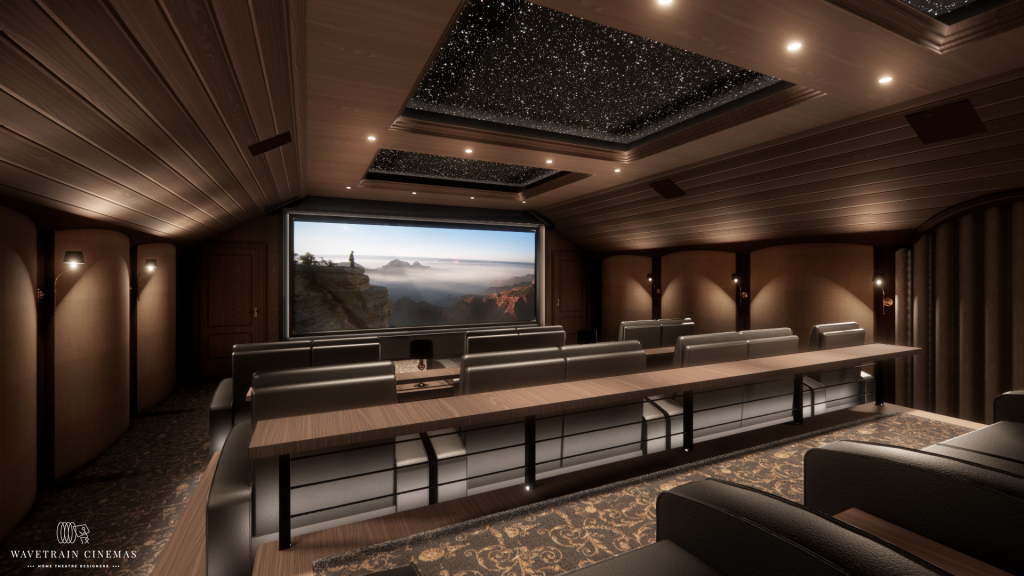
Why the Projector Matters
- It Defines Image Quality
Every element on screen – from crisp subtitles to sweeping landscapes – depends on the projector’s ability to reproduce accurate colours, deep contrast, and sharp resolution. - It Preserves the Filmmaker’s Vision
A reference-grade projector ensures films are seen exactly as they were mastered, with colour and brightness levels faithfully reproduced. - It Creates Immersion
Rich blacks, smooth motion, and true-to-life brightness allow viewers to forget the technology and become absorbed in the story.
A well-chosen home cinema projector transforms an ordinary room into a true cinematic environment, delivering an experience that elevates everything from movie nights to gaming sessions.
When researching projectors, you’ll likely come across terms such as ANSI lumens and contrast ratio. ANSI lumens is a standardised measurement of light output that indicates a projector’s brightness. Because it was developed in the United States, not all manufacturers use this standard so it’s important to look beyond marketing claims and understand your projector’s actual light output. The brightness level directly affects image quality: if a projector with low light output is used on too large a screen, colours will appear dull and washed out.
Contrast ratio, on the other hand, defines the difference between the deepest black and the brightest white a projector can produce. It’s a critical factor in perceived image quality, influencing how vibrant, detailed, and lifelike the picture appears.
The Rise of RGB Pure Laser
The most significant leap in projection technology in recent years has been the move from lamp-based to RGB Pure Laser projectors. Unlike lamps, which require regular replacement and gradually lose brightness and colour accuracy, RGB lasers provide:
- Exceptionally long lifespan with minimal maintenance – most laser projectors deliver 20,000+ hours of use while maintaining outstanding brightness and colour performance.
- Wider colour gamut, reaching and even exceeding DCI-P3, and approaching the Rec.2020 standard that unlocks more lifelike images from 4K home content.
- Improved HDR performance, making highlights brighter and blacks deeper.
This transition has brought professional-grade image fidelity into private cinemas, giving homeowners access to performance levels once reserved for commercial theatres and post-production suites.
When to choose Laser vs LED
Laser projectors: best for dedicated home spaces needing high brightness, large screens and long duty cycles.
LED projectors: suit portable projectors and casual home entertainment where compact size and efficiency matter more than peak output.
New Developments in Home Theatre Projection
At CEDIA Expo 2025, several breakthroughs were showcased that highlight where projection technology is headed. Among them, Christie Digital’s Eclipse G3 and its new Variable Dynamic Dimming (VDR) system pushed the boundaries of what’s possible in contrast and realism.
- Christie Eclipse G3:
Designed for the most demanding reference cinemas, it delivers black levels and HDR performance that many consider industry-defining.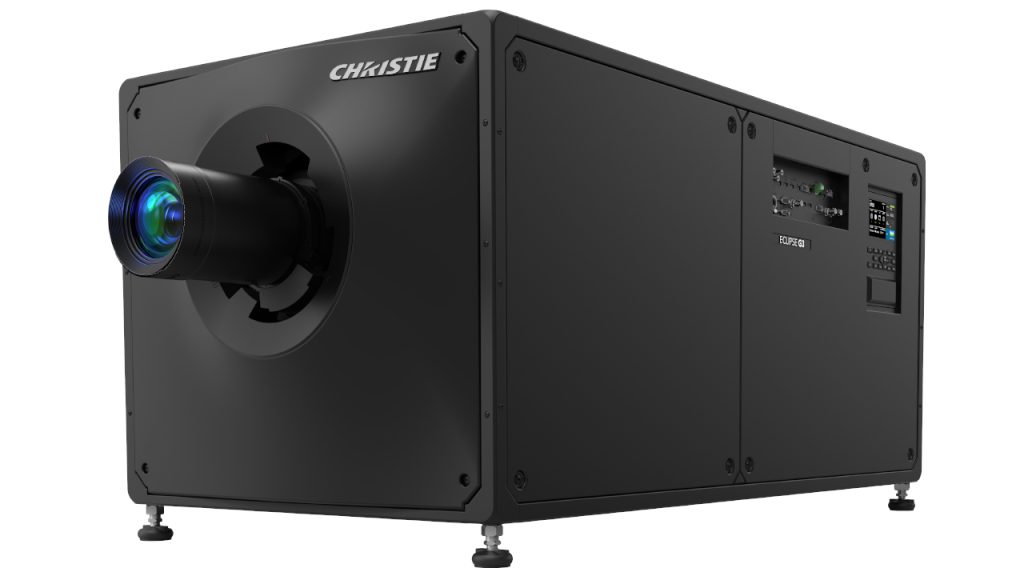
- VDR Technology:
Available as an upgrade path for existing Eclipse models, VDR introduces dynamic dimming across multiple laser channels, enabling unprecedented control over brightness and contrast on a frame-by-frame basis.
While Christie is leading with these innovations, they’re part of a broader industry movement. Other manufacturers are also advancing laser projection with their own approaches to dimming, HDR optimisation, and colour accuracy. The direction is clear: higher contrast, wider colour, and longer-lasting performance are becoming the standard for premium home cinema.
Matching the Projector to the Room
The choice of projector isn’t about picking the “biggest and brightest.” It’s about matching technology to the room:
- Room Size & Throw Distance: Determines the type of lens and projector placement.
- Screen Size & Gain: Larger screens demand higher light output to maintain clarity and brightness.
- Seating Distance: Influences whether true 4K or higher resolution is necessary.
- Light Control: The darker the room, the more you can benefit from extreme black levels and subtle contrast.
This is why projector selection comes after the cinema’s room dimensions, acoustics, and screen design are established. The projector should be the final piece of the puzzle, ensuring everything works together seamlessly.
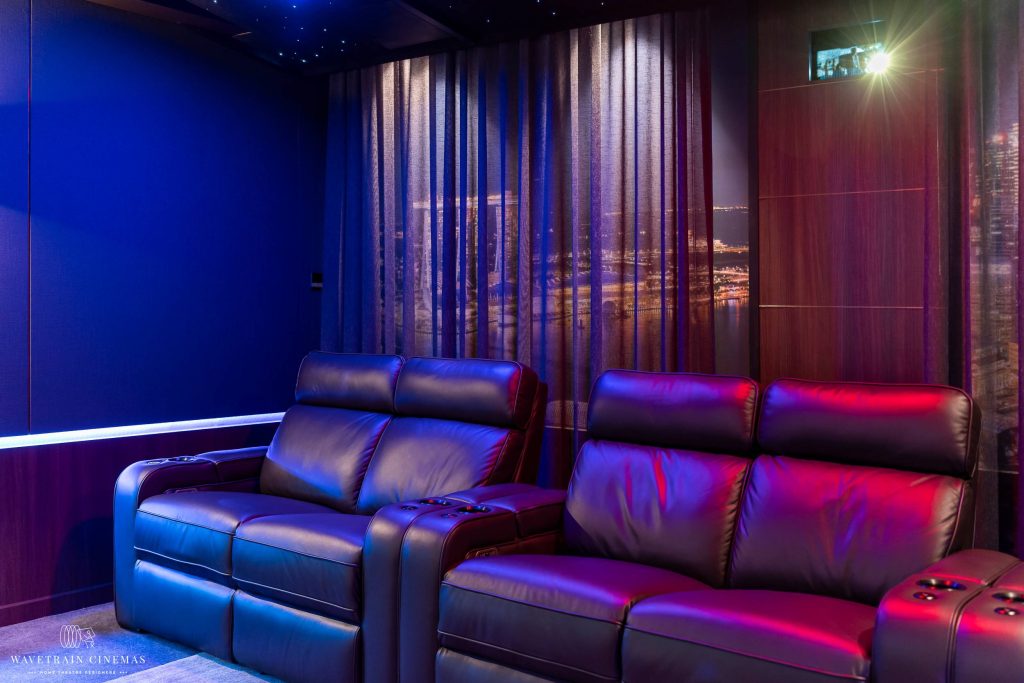
Matching the Projector with the Right Screen Size
The relationship between your projector and screen size plays a huge role in how your cinema will look and feel. Even the best projector can underperform if it’s paired with the wrong screen. Getting this balance right ensures every seat in the room enjoys a clear, bright, and truly immersive picture.
- Screen Size Affects Brightness and Impact
As the screen gets larger, the projector’s light is spread over a bigger surface. If the projector isn’t powerful enough for the screen size, the image can look dull and flat, especially in HDR scenes where brightness is crucial. Matching the screen size and screen gain to the projector’s light output and your room’s lighting conditions is key to preserving contrast and vibrancy. - Resolution and Seating Distance Work Together
Your seating distance should be carefully considered with screen size to get the most from 4K or higher resolution. If the screen is too small, you may not see the extra detail. If it’s too large, the image can lose sharpness. Finding the right proportions ensures the picture feels cinematic without compromising clarity. - Choosing the Right Screen Material
Screen surfaces aren’t one-size-fits-all. Woven and microperforated screens each offer different benefits, from acoustic transparency to visual smoothness. Pairing the right projector with the right screen material avoids distracting artefacts, ensuring the focus stays on the story.
When the projector and screen are perfectly matched, the technology disappears and the magic of cinema takes over.
Beyond Specs: The Importance of Calibration
Even the most advanced projector won’t perform at its peak straight out of the box. Professional calibration is essential. At Wavetrain Cinemas, we:
- Calibrate colour, brightness, and contrast to ISF and PVA standards.
- Optimise lens alignment for edge-to-edge sharpness.
- Integrate with masking systems to achieve accurate aspect ratios and enhance the perceived performance of the image.
- Incorporate a Lumagen video processor to ensure the projector receives the best possible video signal, optimising colour accuracy, contrast, aspect ratio, and overall image fidelity.
- Balance projection with acoustics and seating to ensure total immersion.
This ensures that the investment in cutting-edge technology pays off in the only way that matters: how it feels to sit in the room and watch a film.
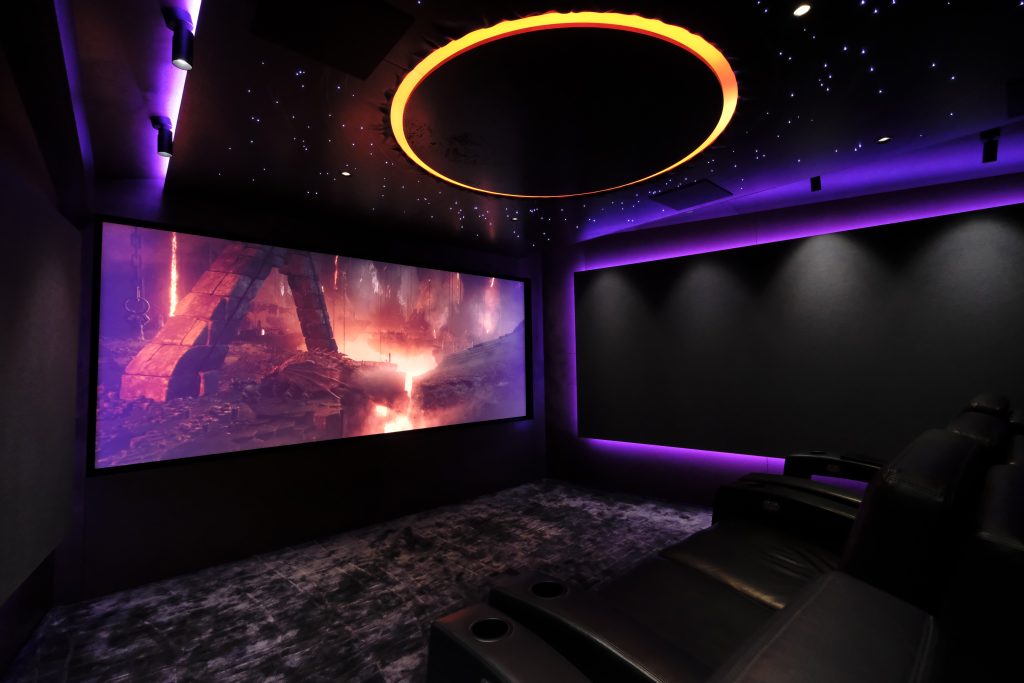
Choosing the Right Projector for Your Home Cinema: Key Takeaways
The latest innovations in projection – from RGB Pure Laser to systems like the Eclipse G3 and VDR – represent a new era for home cinema. They’re making it possible to enjoy a level of image fidelity at home that was once the sole domain of commercial cinemas and mastering studios.
But the projector is only one part of the equation. To achieve true reference performance, it must be matched to the architecture, acoustics, and design of the room. That’s where expertise matters most.
At Wavetrain Cinemas, our role is to guide clients through these choices, cutting through the hype, selecting the right technology for their space, and ensuring every detail works in harmony. Because in the end, the projector doesn’t just define the cinema, it defines the experience.

